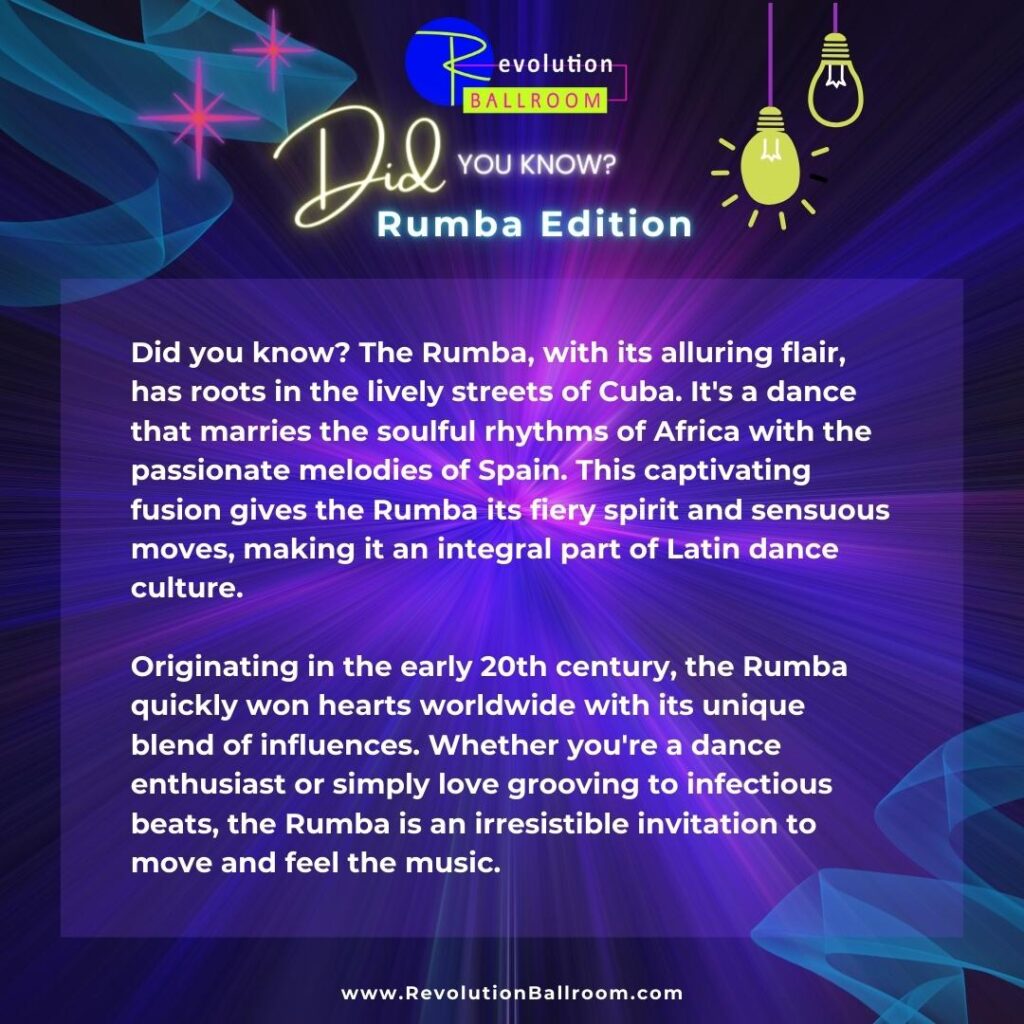Rumba Dance History

Rumba Rhythms 🔥🌟
Explore the history of Rumba, a fiery fusion of African rhythms and Spanish melodies that fuels Latin dance culture. Feel the music, and let the Rumba’s allure sweep you away! 💃🔥🎶
Rumba is a lively and popular genre of music and dance with origins in Cuba. It has a complex history with several distinct styles and time periods associated with its development.
- Yambú (late 19th century):
- Origin: Yambú is one of the oldest forms of Rumba and has its roots in the Afro-Cuban communities of Havana and Matanzas in the late 19th century. It developed as a way for enslaved Africans to preserve their cultural heritage in Cuba.
- Style: Yambú is characterized by slow, graceful movements and a focus on storytelling and ritualistic elements. It is danced in a close embrace with subtle footwork.
- Guaguancó (late 19th century):
- Origin: Guaguancó also emerged in the late 19th century in Havana and Matanzas, primarily among Afro-Cuban communities.
- Style: Guaguancó is more energetic and flirtatious compared to Yambú. It features playful interactions between the dancers, including the male “guaguancó” dancer trying to catch or flirt with the female “rumbera” dancer. It has a faster tempo and incorporates more complex footwork.
- Columbia (late 19th century):
- Origin: Columbia is another style of Rumba with origins in the late 19th century. It developed in the rural regions of Cuba, and its origins are associated with the Yoruba people and their religious practices.
- Style: Columbia is a solo male dance that is highly athletic and rhythmic. Dancers showcase their virtuosity and agility through intricate footwork and body movements. It is often performed as a competition or exhibition.
- Rumba as a genre (20th century):
- While the individual Rumba styles (Yambú, Guaguancó, and Columbia) developed in the late 19th century, the term “Rumba” was later used to refer to the collective Afro-Cuban music and dance styles. This genre became more widely recognized in the early 20th century.
Rumba, as a genre, went on to influence various Latin and Afro-Cuban music styles and dance forms, including Son, Cubano, and Salsa. Its origins in African and Afro-Cuban traditions have left a significant mark on the musical and dance culture of Cuba and have also gained popularity worldwide.
Check out our other Blog posts for more fascinating tidbits as we journey through dance history! 💫
Ready to learn Rumba?